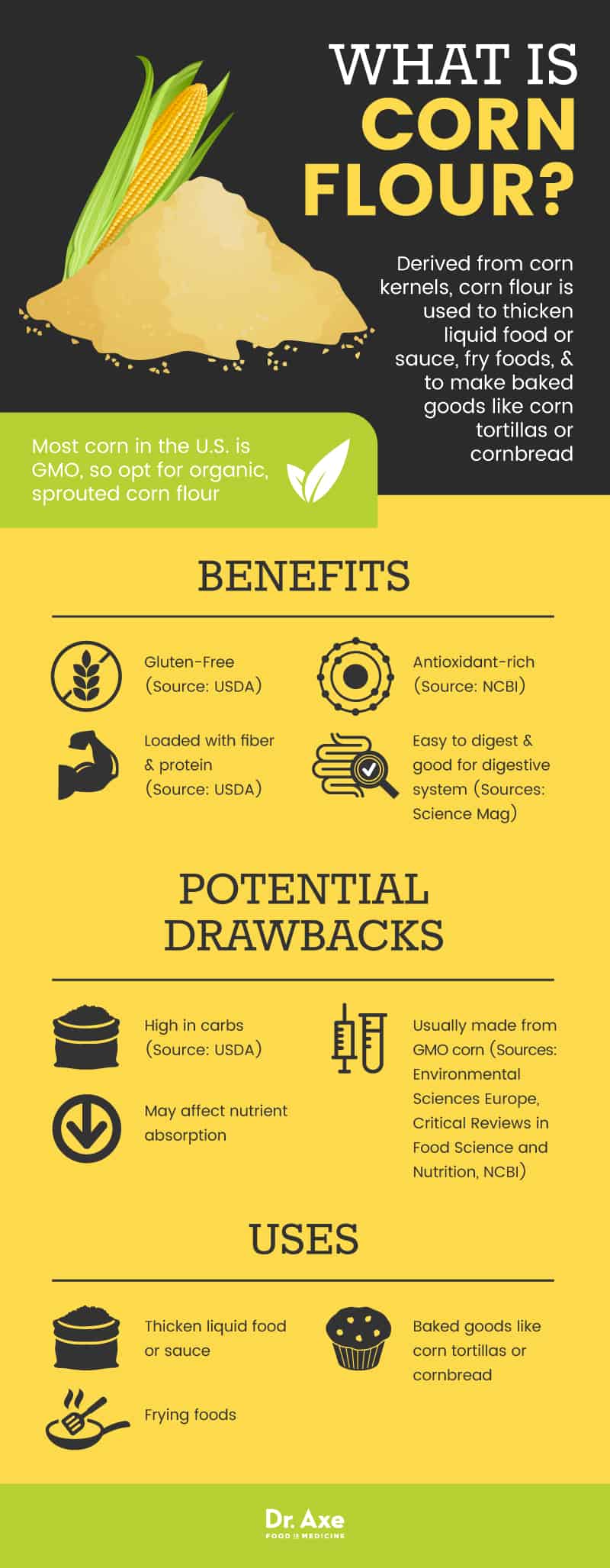Introduction To Semolina And Cornmeal

Semolina and cornmeal are two types of flour commonly used in cooking and baking. Semolina is made from durum wheat and has a coarser texture compared to regular wheat flour. It is commonly used in making pasta, bread, and desserts like puddings and halwa. On the other hand, cornmeal is made from ground corn and has a slightly sweet taste. It is often used in making cornbread, polenta, and breading for fried foods. Both semolina and cornmeal have their own unique characteristics and can be used interchangeably in many recipes.
1 What Is Semolina And Its Common Uses
Semolina is a type of flour made from durum wheat, known for its coarse texture and golden color. It has a high protein content, which makes it ideal for creating a sturdy dough and giving baked goods a chewy texture. Semolina is commonly used to make pasta, bread, and pizza dough. It is also a popular choice for desserts, such as puddings and halwa. With its versatility and unique texture, semolina adds a rich and nutty flavor to a variety of dishes, making it a staple in many cuisines around the world.
2 Understanding Cornmeal And Its Culinary Applications
Cornmeal is a type of flour that is made from dried corn kernels. It has a coarse texture and a slightly sweet flavor. Cornmeal is commonly used in a variety of recipes, especially in North American and Latin American cuisines. It is a key ingredient in making cornbread, tortillas, and tamales. Cornmeal can also be used as a coating for fried foods, such as chicken and fish, giving them a crispy and flavorful exterior. Its versatility makes cornmeal a popular choice in both savory and sweet dishes, adding a unique taste and texture.
Nutritional Value And Health Benefits

Cornmeal and semolina both offer nutritional value and health benefits. They are both rich in gluten protein and dietary fiber, which can aid in digestion and promote feelings of fullness. Additionally, they contain essential vitamins and minerals, such as iron, magnesium, and B vitamins. These nutrients are important for overall health and well-being. However, it is worth noting that individuals with wheat allergies should exercise caution when consuming semolina, as it is derived from wheat. As with any food, moderation is key to fully enjoy the nutritional benefits these flours have to offer.
1 Nutritional Content Of Semolina
Semolina is a highly nutritious flour that offers a range of essential minerals and vitamins. It is rich in gluten protein and dietary fiber, which can aid in digestion and promote a feeling of fullness. Semolina is a good source of iron, magnesium, and B vitamins, which are important for maintaining overall health. However, individuals with wheat allergies should exercise caution when consuming semolina, as it is derived from wheat. It is best to consult with a healthcare professional or nutritionist to determine if semolina is suitable for your dietary needs.
2 Health Benefits Associated With Cornmeal
Cornmeal offers several health benefits that make it a nutritious ingredient to incorporate into your diet. Firstly, cornmeal is a good source of carbohydrates, providing a steady source of energy. It also contains dietary fiber, which aids in digestion and can help prevent constipation. Additionally, cornmeal is rich in antioxidants, such as lutein and zeaxanthin, which promote healthy vision and protect against age-related macular degeneration. Lastly, cornmeal is gluten-free, making it a suitable alternative for individuals with gluten sensitivities or celiac disease. Including cornmeal in your meals can contribute to a well-balanced and nutritious diet.
Cooking Properties And Texture

When it comes to cooking properties, both semolina and cornmeal have distinct characteristics. Semolina is known for its ability to absorb liquids and form a thick, creamy texture when cooked. It is commonly used to make pasta, bread, and desserts like puddings and cakes. On the other hand, cornmeal has a coarse, gritty texture and is often used in recipes that require a crispy or crunchy finish, such as cornbread, polenta, and coating for fried foods. The texture of cornmeal can range from fine to coarse, depending on the grind. These differences in cooking properties and texture make semolina and cornmeal versatile ingredients in the kitchen.
1 Cooking Properties And Texture Of Semolina
Semolina has unique cooking properties and a distinctive texture that sets it apart from other flours. When cooked, semolina has a remarkable ability to absorb liquids and form a thick, creamy texture. This makes it perfect for making pasta dough, as it can hold its shape and create a smooth, velvety consistency. Additionally, semolina’s coarse texture adds a delightful bite to baked goods like bread and cakes. Its grainy texture creates a pleasing contrast to the soft interior, making semolina-based desserts truly irresistible. Whether it’s in pasta or desserts, semolina adds a delightful texture and richness to any dish.
2 Texture Comparison Between Semolina And Cornmeal
Semolina and cornmeal have distinct textures that differentiate them from each other. Semolina has a coarser texture compared to cornmeal, with larger particles that give it a granular and grainy feel. This texture adds a delightful crunch and bite to dishes such as pasta and bread. On the other hand, cornmeal has a finer texture with smaller particles, which results in a smoother consistency. It is often used to provide a soft and tender texture to baked goods like cornbread and polenta. The different textures of semolina and cornmeal offer unique sensory experiences in various culinary creations.
Culinary Uses And Recipes

Semolina and cornmeal have versatile culinary uses and can be incorporated into a wide range of dishes. Semolina is most commonly used in pasta-making, where its coarse texture adds a delightful bite. It is also a key ingredient in traditional Italian desserts like semolina cake and Sicilian cannoli. On the other hand, cornmeal is often used to make delicious cornbread, polenta, and even crispy coatings for fried foods like onion rings and fried chicken. These flours can be easily substituted for each other in recipes, offering different textures and flavors to your culinary creations.
1 Popular Dishes Made With Semolina
Popular dishes made with semolina include pasta, couscous, and desserts. Semolina pasta, such as spaghetti and macaroni, is beloved for its firm texture and ability to hold sauces well. Couscous, a popular North African dish, is made from semolina and is often served with stews or as a salad base. In desserts, semolina is used to make semolina pudding, cakes, and pastries. The coarse texture of semolina adds a delightful chewiness to these sweet treats. Semolina’s versatility in both savory and sweet dishes makes it a staple in many culinary traditions around the world.
2 Traditional Recipes Featuring Cornmeal
Cornmeal is a versatile ingredient that plays a starring role in many traditional recipes. One such recipe is cornbread, a classic Southern dish. Cornbread is a quick and easy bread made with cornmeal, flour, buttermilk, and other ingredients. It is often served with butter or drizzled with honey for added sweetness. Another popular traditional recipe featuring cornmeal is polenta. Polenta is a creamy and comforting dish made by simmering cornmeal in water or stock until it thickens. It is commonly served as a side dish or as a base for savory toppings like braised meats or mushrooms. These traditional recipes highlight the unique flavors and textures that cornmeal brings to the table.
Which One To Choose: Semolina Or Cornmeal

When deciding between semolina and cornmeal, it ultimately comes down to personal preference and the specific dish you are making. Semolina is known for its unique texture and ability to create a light and airy dough, making it a popular choice for pasta and bread recipes. On the other hand, cornmeal offers a coarser texture and lends a distinct flavor to dishes like cornbread and polenta. If you are looking for a traditional Italian pizza crust, semolina is the recommended choice for its authentic taste and texture. However, both semolina and cornmeal have their own unique culinary applications and can be used interchangeably in many recipes. It’s all about experimenting and finding what works best for you.
1 Factors To Consider When Selecting Between Semolina And Cornmeal
When choosing between semolina and cornmeal, there are a few factors to consider. First, consider the desired texture and consistency of your dish. Semolina provides a light and airy texture, making it ideal for pasta and bread recipes. On the other hand, cornmeal offers a coarser texture and a distinct corn flavor, which works well in dishes like cornbread and polenta. Additionally, consider the flavor profile. Semolina has a neutral taste, while cornmeal adds a sweet and corny flavor to your dishes. Lastly, consider the cultural and regional preferences in the cuisine you are preparing.
2 Recommended Use Cases For Semolina And Cornmeal
Semolina and cornmeal have their own unique uses in the culinary world. Here are two recommended use cases for each:
- Semolina:
- Pasta: Semolina flour is commonly used to make pasta, as it provides a light and airy texture. It gives homemade pasta a perfect balance of tenderness and firmness.- Bread: Semolina adds a distinct flavor and texture to bread, making it perfect for recipes like Italian ciabatta or focaccia. Its coarse texture gives a delightful crunch to the crust.
- Cornmeal:
- Cornbread: Cornmeal is a staple in cornbread recipes, giving it a deliciously moist and crumbly texture. It adds a sweet and slightly nutty flavor to this classic southern dish.- Polenta: Cornmeal is essential in making creamy and comforting polenta. It cooks down to a smooth, thick consistency and pairs well with a variety of savory toppings, like cheese, mushrooms, or braised meats.
Both semolina and cornmeal can be versatile ingredients in your kitchen. Experiment with different recipes to fully appreciate the unique qualities of each flour.
Conclusion

In conclusion, both semolina and cornmeal have their own unique characteristics and culinary uses. Semolina is commonly used for making homemade pasta and adding texture to bread, while cornmeal is a staple in cornbread and polenta recipes. When it comes to choosing between semolina and cornmeal, it ultimately depends on personal preference and the desired outcome of the dish. Both flours offer distinct flavors and textures that can enhance a variety of recipes. Experimenting with different recipes and techniques can help discover the full potential of semolina and cornmeal in the kitchen.
Comparison Of Semolina And Cornmeal In Cooking And Nutrition
When it comes to cooking and nutrition, there are some notable differences between semolina and cornmeal.
In terms of cooking, semolina is often used for making pasta and adding texture to bread. It has a coarse texture that gives a distinct chewiness to dishes. On the other hand, cornmeal is primarily used in cornbread recipes and for making polenta. It has a slightly sweet and nutty flavor that pairs well with corn-based dishes.
In terms of nutrition, semolina is higher in protein and fiber compared to cornmeal. It also contains more vitamins and minerals, including calcium, iron, and magnesium. Cornmeal, on the other hand, is a good source of carbohydrates and provides essential energy.
FAQ About Floury Face-off: Semolina Vs Cornmeal
Q: What is semolina and cornmeal?
A: Semolina is a coarse flour made from durum wheat, while cornmeal is a coarse flour made from ground corn.
Q: How do semolina and cornmeal differ in terms of texture?
A: Semolina is gritty and has a slightly nutty flavor, while cornmeal is finer and has a sweeter taste.
Q: Can semolina and cornmeal be used interchangeably in recipes?
A: Semolina and cornmeal have distinct textures and flavors, so they may not always be interchangeable. It is best to use them according to the recipe’s requirements.
Q: Which dishes are best suited for semolina?
A: Semolina is commonly used to make pasta, puddings, and certain types of bread such as Italian bread and pizza crust.
Q: In what dishes can cornmeal shine?
A: Cornmeal is often used in making cornbread, polenta, corn cakes, and as a coating for fried foods like fish or chicken.
Q: Are semolina and cornmeal gluten-free?
A: Semolina is not gluten-free as it is made from wheat, while cornmeal is naturally gluten-free as it is made from corn.

The Finer Diner has a rich history deeply rooted in the Mt. Oliver and Hilltop community. Our journey began with a simple yet ambitious vision – to create a welcoming space where friends and families could come together to enjoy delicious, comforting meals in a classic diner-style setting. Since our establishment, we have been dedicated to serving food, creating lasting memories, and fostering a sense of belonging within our community. Our commitment to quality, authenticity, and exceptional service has been the cornerstone of our success.